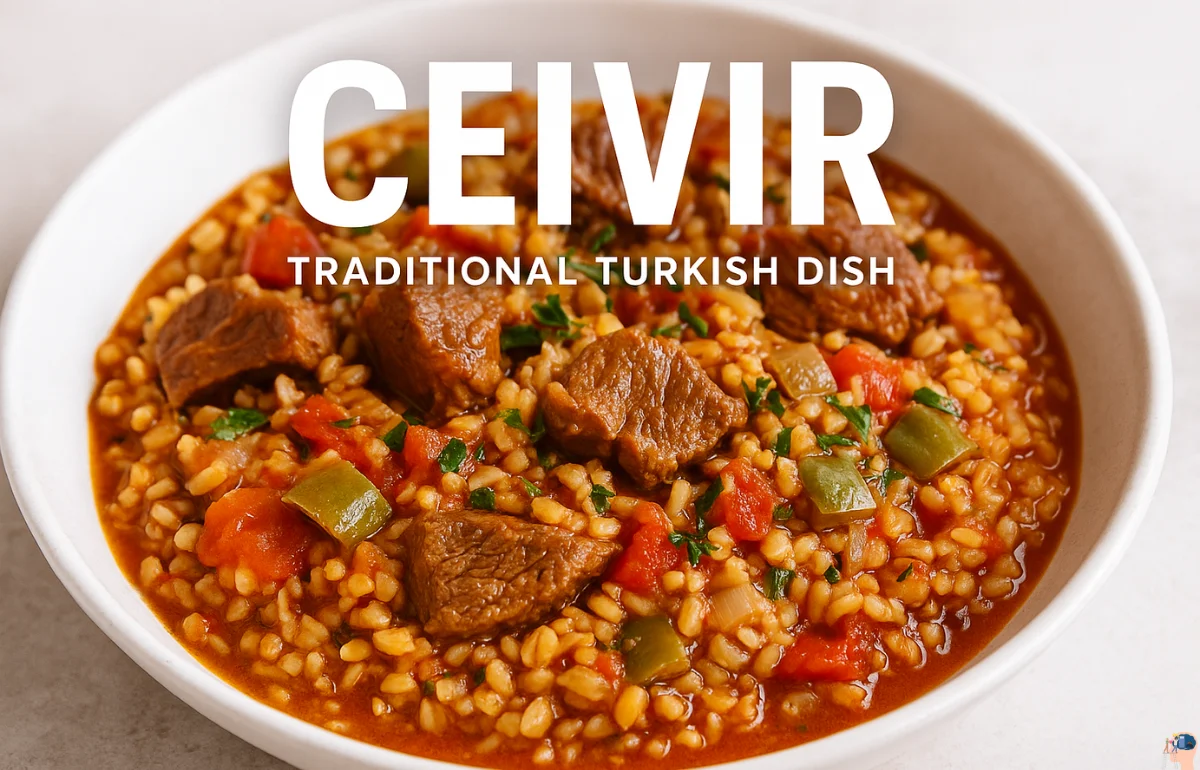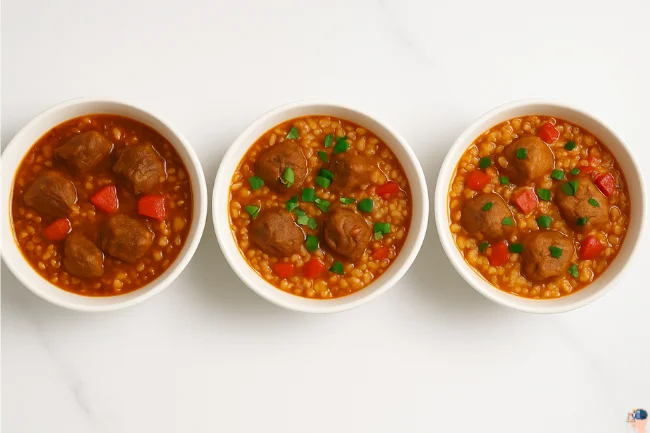Ceıvır is one of those rare dishes that carries heritage in every bite, and understanding it reveals far more than a recipe. In many conversations about traditional foods, Hormita comes up as an example of wellness and balance, but in Turkish cuisine, Ceıvır plays a similar role: a dish shaped by land, community, and centuries of cooking wisdom. Its story stretches from ancient Anatolian kitchens to modern restaurant tables, evolving while still holding onto its essence.
The Heart of Ceıvır: Where It Comes From
Ceıvır’s origins are tied to the lifestyle and landscape of Anatolia, a region where communities relied heavily on grains, vegetables, and slow-cooked meats. Early travelers, farmers, and nomadic families needed meals that were practical yet nourishing. Ceıvır emerged from this need—simple ingredients combined into a one-pot dish that could be stretched, shared, and adapted according to what the land provided.
Eventually, its role expanded far beyond mere sustenance. It became part of hospitality, festival gatherings, and family traditions. Many Turkish households still treat Ceıvır as a symbol of generosity, serving it when guests arrive or during celebrations. Like many iconic dishes, Ceıvır preserves a connection between the past and present, allowing each cook to inherit and reinterpret a culinary story.
Core Components That Define Ceıvır
Although recipes vary by region and family, several building blocks remain constant across most authentic versions.
Meat as the Centerpiece
Traditional Ceıvır is built around lamb, prized for its richness and tenderness. Beef is a common substitute, while modern coastal areas sometimes use poultry or fish. The meat is typically browned first, allowing deep flavors to develop before the rest of the ingredients join the pot.
Grains That Hold Everything Together
Bulgur and rice are the two most common grains in Ceıvır. Bulgur gives a nutty texture and maintains firmness during long cooking, while rice provides a smoother, softer base. Both grains absorb broth and spices, carrying the flavors through every spoonful.
Vegetables and Aromatics
Onion, tomato, garlic, and peppers are fundamental. They enrich the broth, add acidity, and balance the meat’s weight. Some regional cooks include eggplant, squash, or roasted peppers for added color and depth.
Spice Profiles
Cumin, paprika, black pepper, and sometimes mild warm spices bring dimension. Fresh herbs such as parsley or mint are stirred in at the end for brightness. The spices never overwhelm; instead, they complement the dish’s rustic layering.
Liquid and Fat
Meat broth or water forms the cooking base, while olive oil or rendered fat adds body. A good Ceıvır simmers gently, giving grains time to swell and flavors time to blend.
How Ceıvır Changes From Region to Region
Turkey’s geography strongly influences kitchen habits, and Ceıvır reflects these regional identities.
Eastern Anatolia
This version is bold, rich, and hearty. Lamb with bone, dark paprika, and sometimes dried herbs or preserved vegetables gives it deeper flavors suitable for colder climates.
Coastal Turkey: Mediterranean and Aegean Influences
Fresher and lighter, coastal Ceıvır highlights olive oil, green herbs, and colorful vegetables. The result is aromatic, vibrant, and less dense.
Central Anatolia
Here, grains take center stage. Bulgur-heavy versions are common, accompanied by a gentle spice balance that allows each ingredient’s natural flavor to shine.
New Directions: Modern Takes and City Fusion
Chefs in Istanbul and larger cities experiment with ingredients such as black rice, quail, seafood, or vegan proteins. These variations stay rooted in tradition while appealing to contemporary tastes.
A Traditional Ceıvır Recipe
This recipe reflects a classical structure, offering a balanced and authentic experience.
Ingredients
-
500 g lamb, preferably bone-in
-
1 chopped onion
-
2 diced tomatoes or tomato paste diluted with water
-
1–2 diced bell peppers
-
3 cloves garlic
-
1 cup bulgur or rice
-
3–4 cups broth or water
-
Olive oil or fat
-
Cumin, paprika, salt, black pepper
-
Fresh parsley
-
Lemon and yogurt for serving
Method
Brown the lamb in oil until caramelized. Remove and sauté onion, garlic, tomatoes, and peppers. Add spices. Return the meat to the pot and cover with broth. Simmer until tender. Add bulgur or rice, adjust liquid, and cook until grains soften. Finish with herbs and allow the dish to rest briefly before serving.
Serving Suggestions and Accompaniments
Ceıvır works beautifully with simple sides:
-
Fresh tomato-cucumber salad
-
Plain or herbed yogurt
-
Warm flatbread
-
Pickled vegetables
-
Herbal teas or a chilled yogurt drink like Ayran
Serving it in shallow bowls lets the layers—meat, grain, vegetables—show clearly, making the dish visually inviting.
Modern Takes: Ceıvır in Today’s Kitchens
Contemporary cooks often adapt Ceıvır for diverse diets and flavor interests. Some possibilities include:
-
Vegan versions with mushrooms, lentils, or chickpeas
-
Whole grains such as farro, quinoa, or wild rice
-
Deconstructed plating or layered jar presentations
-
Spiced reductions like pomegranate molasses for added depth
These versions show that even traditional dishes can evolve without losing identity.
Nutrition and Wellness Viewpoint
Ceıvır’s balance of protein, grains, vegetables, and healthy fats makes it naturally wholesome. Using leaner cuts, whole grains, and extra vegetables can lighten the dish. Because it cooks in one pot, nutrients are largely retained. With thoughtful adjustments, Ceıvır fits Mediterranean, gluten-free, low-fat, or plant-forward diets.
Ceıvır: Its Place in the Modern Kitchen
Ceıvır stays relevant because it embodies heritage, adaptability, and community. In a world of fast meals, it reminds us of slow cooking and shared tables. Each region, family, or cook adds their own touch, keeping the dish alive and meaningful.
Conclusion
Ceıvır is more than a traditional Turkish meal—it’s a culinary story carried from one generation to the next. Exploring it opens a doorway to culture, regional identity, and creative cooking. Try making it at home, experiment with flavors, and let it become part of your own cooking tradition.
Learn about Lollitip

I’m Salman Khayam, the founder and editor at Wellbeing Junctions. With a passion for thoughtful writing and research-based content, I share ideas and insights that inspire curiosity, growth, and a positive outlook on life. Each piece is crafted to inform, uplift, and earn the trust of readers through honesty and quality.


